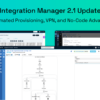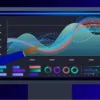Obviously, EDI trading partners are a critical part of EDI and B2B communications. Without them, you would need to worry about transferring billing information, purchase orders, bills of lading, and other documents manually.
Your business doesn’t exist in a vacuum. You need your trading partners to keep your business moving forward, and they are an important part of your growth strategy.
That makes EDI partner management a crucial piece of your business. But most of the time partner management is talked about as a function of IT. That’s because, until recently, the business needed EDI and IT was responsible to set it up and manage it.
B2B communications will continue to involve developers, but it’s time for that involvement to be focused on complex EDI functions and not on the day to day monitoring and execution of messages.
Partners are integral to the business, and we believe that with the business is where partner management should exist.
Traditional EDI Trading Partner Management
It’s not really a surprise that when others talk about partner management they do so primarily as a discussion for IT teams. Vendors discuss the application and show process maps for data flow during runtime.
The reason for that is buried in the history of EDI. Onboarding and configuration of new partners required a specialized set of knowledge that spanned the roles of EDI analyst and IT teams. The EDI analyst understood the intricacies of the different formats used as EDI trading partners were onboarded. IT was involved to set up transfer protocols, test, and debug issues when messages failed.
The impact for all of this was on the business, who would need to wait while the technical team and analysts initiated and managed the B2B communications with partners.
EDI analysts weren’t happy because they didn’t have end-to-end visibility of the message flow and were buried under a load of requests. IT wasn’t happy because their already full queue included issues like tracking down message misconfigurations or trying to find a way to build flexible integrations within the labyrinth of unfamiliar protocols. And the business was unhappy because of problems and delays with messages and onboarding directly affected business profitability and growth.
As long as the primary source of partner management resides with technical resources, and not the business, B2B communications risk being slow or interrupted.
A New Perspective on EDI Trading Partner Management
Here’s the thing – partner management is a business function. It’s about more than pushing data from one place to another.
Partner management is more than an application.
Our perspective is that a partner manager application should enable teams across the business to simplify the entire trading partner process. Partner manager is more than just onboarding software – it’s an application that helps you manage your partner relationships, just like a CRM does with your customers.
As a result, responsibilities for trading partner relationship management should be like those for your CRM. For example, let’s say a company uses Salesforce. IT is involved with some setup, and if there are major issues with the application. Salesforce admins manage configuration and more complex tasks, like the creation of new forms and workflows. The lion’s share of the day to day work with the CRM, however, is in the hands of the business people who manage the relationships and need the information.

While the reality of EDI communications may have mandated heavy involvement by IT in B2B communications, modern technology has removed that requirement. The process of configuring EDI messages can now be abstracted enough to make onboarding and updating partner connections something that can be accomplished without each partner needing specialized integrations.
As we evolved the PortX platform, we knew a very modern, and very different perspective was needed for our partner manager tools. It was important to adopt a more CRM-like view of partner management while ensuring that our partner manager toolset addressed much of the trading partner process. We wanted to alleviate the pressure on IT, give EDI analysts tools to quickly configure partners, and put the business in the driver’s seat, all while adopting a modern approach to the technical architecture.
If you’re interested in seeing how PortX moves the needle forward on EDI and trading partner communications, contact us now.







